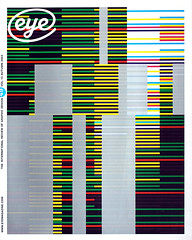Autumn 2003
‘Femicide’ posters
300 murders near the Ciudad Juárez sweatshops provoke a graphic ‘shout’
El Paso, Texas, and Ciudad Juárez, a city of 1.5m people in the northern Mexican state of Chihuahua, are less than four km apart. Yet no two cities could be economically further apart. The shantytowns spread out around Juárez are home to a vast number of indigenous migrant workers who come there from the unemployment black spots of the agrarian south. Many hope to go further, ‘la otro lado’ [to the other side], but most get stuck in the slums, working all hours, earning barely enough to survive.
Women – many as young as fourteen – comprise 70 per cent of the Juárez workforce. They eke out a four-dollar-a-day living in the maquiladoras – sweatshop factories that have mushroomed along the border since Mexico signed up to the North American Free Trade Agreement in 1992. Yet in addition to exploitation and squalor, the women of Ciudad Juárez are oppressed by a murder rate that has attracted worldwide revulsion.
Statistics show that since 1993, at least 300 young women have been kidnapped, raped and killed – their bodies often defiled. Some 190 of these murders have occurred in the past six months; during the same period nearly 100 more have gone missing, presumed dead. The real toll may be higher, since many women do not have families living locally and their disappearances can go unnoticed and unreported. An open letter sent to the Interamerican Commission on Human Rights by angry Juárez residents puts the ‘disappeared’ figure at 450 in the past ten years.
In the face of almost unbelievable official apathy and police incompetence, a group of graphic designers from Mexico City invited colleagues to express their concern and outrage by designing posters around the slogan ‘The Woman of Juárez Demand Justice’.
The first design activity – initially proposed by Rafael López Castro – was timed to coincide with last year’s International Day for the Elimination of Violence Against Women (25 November 2002), when protest marches against the Juaréz killings took place in several towns. Nine designers produced a series of images for a support group working in Ciudad Juaréz, which then distributed them to other groups dealing with domestic violence. Alejandro Magallanes and Leonel Sagahón, two designers at the centre of this project, point out that the designers gave away their images, encouraging the protest groups to apply their own text and messages.
Organised by Arnulfo Aquino and Xavier Bermúdez to mark International Women’s Day, the second event took place in March 2003. An exhibition of more than 60 large-format images by designers from all over the country was staged in a Mexico City metro station. Displays and exhibitions are often mounted in these big spaces: in a city of 20m-plus they are seen by huge numbers of people who may not often visit museums and galleries. Though Magallanes and Sagahón find several of the posters totally inappropriate, even offensive, no designs were censored from the exhibition.
López Castro notes an honest, if sometimes naïve, attempt to deal with a tough issue: the relationship between the sexuality of young, poor women, rape and murder. It has often been observed that the victims fit a series of patterns: apart from the fact that almost all come from the lower economic strata, the majority are in their teens, slim, attractive, and with long dark hair. Irresponsible local officials in Chihauhau have often blamed the girls themselves for the killings, citing the fact that they were out late and alone, or were wearing short skirts and make-up. Many designers saw these crimes – and the official reaction – as an attack on femininity itself.
López believes that the strength of this project rests in its role as a ‘collective shout’, intended to wake up the general population and the authorities. ‘It is important to see real problems,’ says Sagahón, ‘not just “design” and “communication” problems. We are designers, but we are also citizens, and we are also people.’
‘It was amazing,’ says Magallanes, ‘to see whole families standing in front of these posters and talking about this very difficult subject.’ One outcome of this publicity is that rather than continuing to rely on the hopelessly ad hoc investigative methods of the Chihuahua law enforcement agencies, the office of the Federal Prosecutor has now decided to investigate a number of the murders on behalf of the national government. Yet the murder phenomenon – or ‘femicide’ – shows no sign of abating. On the contrary, chillingly, it seems to be spreading to other northern Mexican towns with similar socio-economic conditions.
First published in Eye no. 49 vol. 13 2003
Eye is the world’s most beautiful and collectable graphic design journal, published quarterly for professional designers, students and anyone interested in critical, informed writing about graphic design and visual culture. It is available from all good design bookshops and online at the Eye shop, where you can buy subscriptions and single issues.

